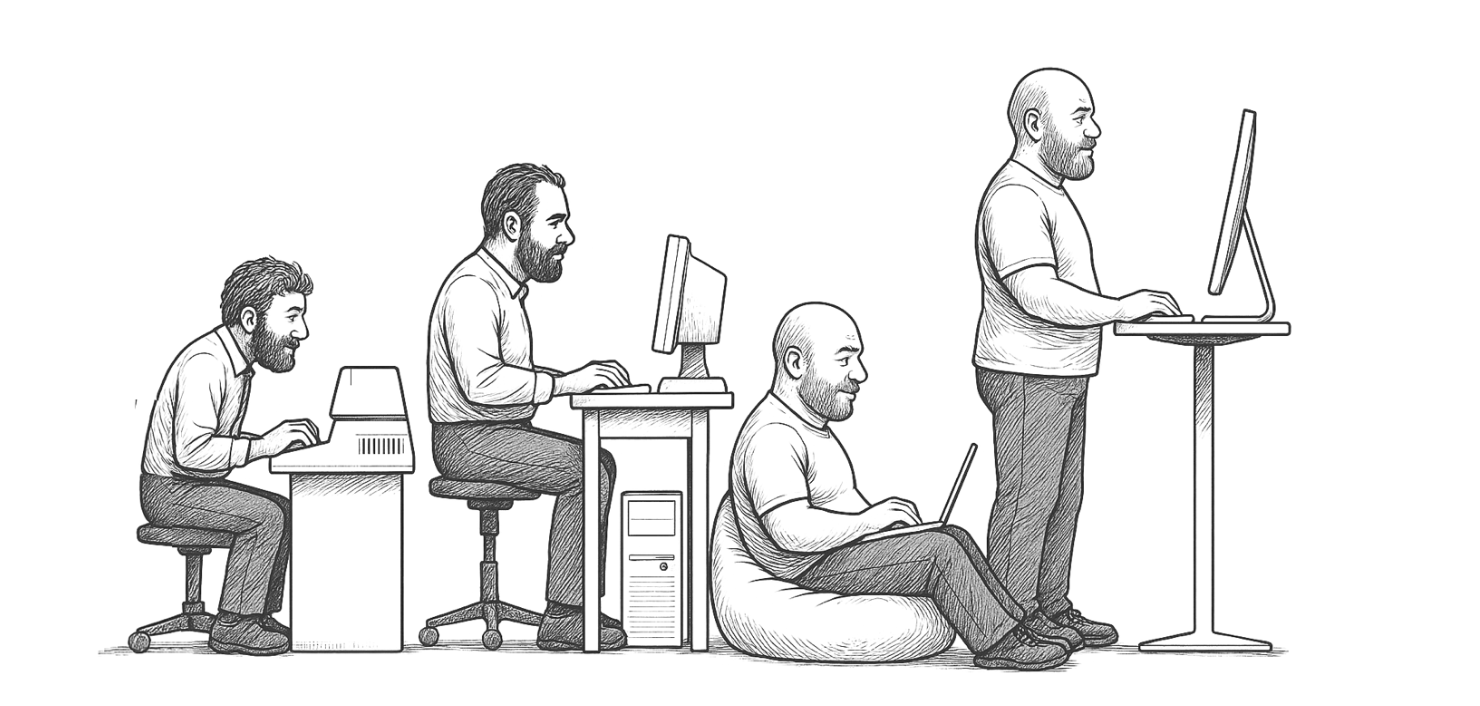Development gets better with Age

He has heard the whispers, “he is getting older, who will replace him?” People asking him with a straight face, “when will you retire?” After close to 25 years at Amazon, where each year has been different and amazing, He feels as young as the day he decided to leave academia and join Amazon.
The thing about getting older as a developer, is that you have seen a lot and encountered many of the problems younger developers are facing (even if they look a little different on first glance). If you’ve been around the block as many times as some of us have, you’ll have earned battle scars along the way. There are days in war rooms you will never forget. You have experimented a lot, and you have failed more times than you care to remember. You have half-a-head full of what is practical and works. And a quarter of that space has been trained to look for red flags, scanning for things that you know will go wrong.
What’s left in your head is used for creativity. Taking in all sorts of signals, building mental models, and coming up with new unique solutions. It’s the best part of our job. As developers, every day we get to create something new. Let that sink in for a second. Who else gets to do that? And that’s why I never take it for granted.
As an older developer, you’ve also seen patterns repeat themselves… constantly. Companies promising the moon but only delivering a package of Swiss cheese.
And along comes AI. Not the AI you’ve been using for the last 15-20 years: NLP, voice-to-text, text-to-speech, translation, image recognition, recommendations, fraud detection, all the things that Amazon.com was built on. No, we’re talking about generative AI, which even as an older developer, I’ll admit is really exciting. The speed of experimentation has dramatically increased. In the hands of a seasoned builder with a healthy dose of scepticism, it is powerful. But it’s also been challenging, because it wasn’t released like other technologies. No one educated users before release. The magic was just let out of the bottle, and because it was so unexpected, the hype absolutely exploded. And this feels strange to us, because we’ve been used to seeing our software evolve with minor version bumps that take a year or more to come out. It took 2 years for Windows 3 to reach Windows 3.1. And Mac OS X made minor version bumps from 2001 to 2019 before it started doing major version bumps each year. But it seems like every week models swap places on the leaderboard with each new version they release.
AWS has always been a B2B company. We’ve always provided the building blocks that allow other companies to innovate for their customers (S3, EC2, DynamoDB, Lambda, DSQL). Yet amidst the hype, we were suddenly being compared to B2C companies. It was frustrating. But experience had taught us what to do. We went back to our roots, democratizing access to technology (models in this case), giving customers choice, keeping privacy and security as our top priorities, providing the guardrails companies need for safety and compliance, and leveraging automated reasoning to reduce potential model errors. That’s the value of having seen patterns repeat over decades - you know which ones work.
The older developer isn’t worried about the barrage of new model announcements and feature releases that come out every week. He’s seen that before. New tech, same patterns.
After all, over the past decades the older developer has probably learned more than 10 programming languages, tons of OSS libraries, and more platforms than he cares to remember. He was always keeping track of technology trends, reading papers, studying new directions, because that was the fun part of the job (you know, learning things). The older developer made sure he was fully prepared when his company was ready to start attacking problems where generative AI is uniquely suited. He’s also read Marc Brooker’s fantastic article about LLM-driven development, and will probably follow his advice.
Almost every customer I speak with asks: “What should we be doing with gen AI?” The best response I’ve seen so far is from Byron Cook, one of our brilliant scientists: “Sorry for not answering your question immediately, but why did you ask me this question?”
You’ll find that 90% of the answers you get back are not because they think generative AI will solve a specific problem that their business is encountering, but because they’re anxious. That they have very strong feelings of FOMO (the fear of missing out).
And the older developer knows that this is exactly the time to press the pause button. To take a beat. He motivates juniors to get educated on the pros and cons, and that board & C-Suite read books like Jeff Lawson “Ask Your developer”.
Then you do exactly what you’ve always done. Have an in-depth conversation with your customer, listen, dive deep into their challenges, suggest architectures, migrations, and tools. And sometimes, the solution will be generative AI.
But as an older developer, you already knew this.
Now, go build!